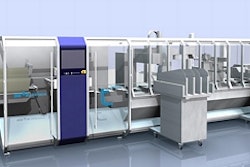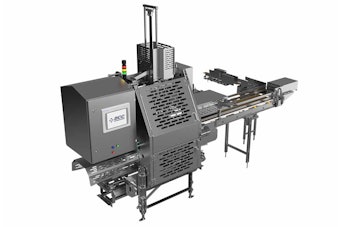Last August, Schering Corp., Kenilworth, NJ, recalled 295까 units of its Nasonex Nasal Spray. The reason? The drug actuator on the primary drug container was missing a part. So some customers might get a solid stream up the old snoot instead of the gentle spray they expected.
A full 25% of Food and Drug Administration drug recalls stem from packaging or labeling problems. And therein lies some of the stimulus for the FDA’s recently announced initiative to update its 25-year-old drug good manufacturing practices (GMPs). Depending on how one looks at it, the review may be a serious cloud on the horizon or the edge of an emerging sun for drug packagers.
There is no question that the FDA has serious worries about the quality of drug packaging. Just two months before the Schering-initiated Nasonex recall, Contract Pharmacal Corp., Hauppauge, NY, called back more than 5ꯠ cartons containing iron and mineral supplement blisters. Each carton contained 10 blister packs, each pack with 10 tablets. The problem was that the name of the product on the blister pack was different from the product name on the carton.
The Contract recall was no big deal for consumers; the blisters were correctly labeled. But the faulty Nasonex actuator was a bit more serious problem and, as it turns out, only the latest in a long line of faulty manufacturing moves at Schering-Plough’s plant in Manati, Puerto Rico.
Just a few months before the Nasonex recall, Schering-Plough had signed a highly publicized consent decree with the FDA promising to clean up its manufacturing operations at Manati, where the Nasonex was made and packaged. As part of the consent decree, Schering-Plough agreed to pay $500 million to the U.S. government in two equal installments.
Repeated problems
Schering had been having trouble for some time with the actuator, which company spokeswoman Dana Bicsko says is supplied by an outside vendor. A 25-page FDA inspection report delivered to Ricardo Zayas, the Manati general manager, on June 13, 2001, cites problems with the Nasonex nozzle spray pattern.
The report notes that Schering recommended removing the nozzle during factory testing, cleaning it with methanol and drying it with a stream of nitrogen to correct the drug delivery problem during testing. But the inspector dryly noted in response: “This modification is not feasible for patients using the product.”
The very first problem that FDA investigation report cites is a packaging glitch: The inspector noted that benzophenone was leaching into the Nasonex fluid. Schering initially said it had done tests showing there is no benzophenone in unlabeled containers; therefore it said the problem was caused by the chemical leaching from the label. When the FDA asked to see those test results, it turned out that they were never done. Schering’s Bicsko responds that the FDA report was incorrect, that Schering had done the tests in question.
cGMP initiative
It may have been coincidence that nine days after Schering sent out the Nasonex recall letters on August 12, FDA Deputy Commissioner Lester Crawford announced a new initiative to enhance the regulation of pharmaceutical manufacturing and product quality.
The initiative focuses on FDA’s current (cGMP) program and will cover veterinary and human drugs, including human biological drug products such as vaccines. Crawford’s statement was largely devoid of specifics.
In an interview with Packaging World, Joe Famulare, director of the division of manufacturing and product quality in the FDA’s Center for Drug Evaluation and Research (CDER), says the FDA realizes that its enforcement actions may not be sufficient to prod the drug industry to modernize its production facilities. The only other fine besides Schering’s that the FDA has issued in recent years was a $30 million penalty to Wyeth Laboratories.
Famulare notes, though, that non-monetary consent decrees contain requirements that force companies to take steps that could result in shutting the company down. But certainly, given infrequent inspections and even less frequent GMP penalties, the drug industry isn’t exactly trembling in its boots.
“Part of the problem may be that drug companies are not taking the GMPs seriously,” Famulare concedes. “But we want to get to the root cause for that. Do our rules encourage them to use the most modern, the most automated facilities?” The FDA’s GMP initiative will also involve workshops on the latest in pharmaceutical engineering and industrial pharmacy, which Famulare hopes will spark industry reappraisals of their facilities.
Labeling a big issue
Famulare says the chief packaging problem area within GMP compliance has been labeling. One of the things that could happen as a result of the GMP review is FDA finalization of a proposed rule issued in 1997 that would allow drug companies to use a fourth method of verifying the accuracy of gang-printed or cut labels.
This stems from a final rule the FDA issued in August 1993 that established three methods that could be used to verify the accuracy of gang-printed or cut labels: (1) dedication of labeling and packaging lines to each different strength of each different drug product; (2) use of appropriate electronic or electromechanical equipment to conduct a 100% examination for correct labeling during or after completion of finishing operations; or (3) use of visual inspection to conduct a 100% examination for correct labeling during or after completion of finishing operations for hand-applied labeling.
In 1994, trade groups submitted two citizens’ petitions to the FDA asking for an extension of the compliance deadline for labels, other than the immediate container label. The FDA agreed and extended that deadline repeatedly through 1997, at which point it published a proposed rule. That proposed rule attempted to make life easier for drug packagers by adding a fourth verification technique: “use of any automated technique, including differentiation by labeling size and shape, that physically prevents incorrect labeling from being processed by labeling and packaging equipment.” That proposed rule was never finalized.
So the verification requirements of the 1993 rule for cut labels for cartons (as opposed to primary containers) remain null and void. The GMP review could result in a blessing for the “long-lost” fourth verification method.
FDA flexibility
On the other hand, it is possible that the FDA might try to ram through some additional controls it mentioned in the 1997 proposed rule as practices it was “encouraging” drug companies to do: (1) converting all articles of cut labeling to roll labeling where possible (such as the use of roll inserts or roll label/insert combinations); (2) using on-line printing methods; or (3) adopting 100% automated verification systems for all items of cut labeling.
FDA statistics on recalls could be used to justify either a toughening or an easing of the cut labeling rules, whichever the FDA decided would improve compliance. Of the 320 recalls in fiscal 2001, 14 were due to correctly labeled products placed in mislabeled cartons, labeling errors on the strength of the medication accounted for 12, container leakage caused five recalls, and defective containers also led to five recalls.
Thirty-six packaging recalls out of 320 do not an explosive problem make. But the FDA will be thinking about the one disaster it can avert.


























